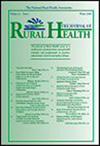Rural-urban disparities in human papillomavirus vaccination: Findings from a cross-sectional survey of 13 southern US states, December 2019-January 2020
Abstract
Background
Rural adolescents in the United States lag behind their urban counterparts in the uptake of the human papillomavirus (HPV) vaccine. However, a systematic assessment of factors associated with rural-urban disparities in HPV vaccination coverage to inform potential vaccination promotion interventions is lacking in the literature. Prioritizing HPV vaccination for rural adolescents is necessary for increasing overall HPV vaccination coverage for adolescents and for reducing the incidence of HPV infections and future HPV-related cancers.
Methods
We conducted a cross-sectional survey of caregivers of adolescents aged 9-17 years from 13 states located in the southern United States. Participants were recruited from a nationally representative online survey panel and self-administered the survey from December 2019 to January 2020. The survey assessed HPV vaccination initiation and series completion for rural and urban adolescents, and sought to systematically identify modifiable factors (eg, caregiver knowledge and attitudes about HPV/HPV vaccine, health care access) and nonmodifiable factors (eg, sociodemographic characteristics) that may be associated with rural-urban disparities in adolescent HPV vaccination. Rural versus urban residence status of respondents was determined using the US Census definition and Federal Information Processing System (FIPS) codes.
Results
Among 2,262 sampled caregivers, data from 987 respondents (43.6%) were included in the analysis; 193 respondents (19.6%) were from rural areas and 794 (80.4%) were from urban areas. Overall, 333 (33.7%) adolescents had received at least 1 dose of HPV vaccination and 259 (26.3%) adolescents had completed HPV vaccination. In comparison to urban adolescents, fewer rural adolescents had initiated (−7.7 percentage points) or completed (−14.9 percentage points) HPV vaccination. Uptake of tetanus, diphtheria, and acellular pertussis (Tdap), meningococcal (MenACWY), and influenza vaccines was similar between urban and rural adolescents. Caregiver attitudes, but not their knowledge about HPV infection or the HPV vaccine, were associated with disparities in HPV vaccination initiation. Rural caregivers were more likely to report concerns with the HPV vaccine, lower access to a pediatric primary care provider, longer travel times to reach health care providers, and HPV vaccination at age 11 years or older compared with age 9 or 10 years. When compared with urban caregivers, fewer rural caregivers reported discussing HPV vaccination with their adolescent's provider although difference in the receipt of a provider recommendation was not statistically significant between rural and urban adolescents.
Conclusions
Our findings confirm rural-urban disparities in HPV vaccination coverage for adolescents living in the 13 southern US states. Future research efforts to reduce rural-urban disparities in HPV vaccination should evaluate the impacts of interventions that increase positive caregiver attitudes about HPV vaccination, expand access to vaccination services and pediatricians for rural adolescents, enable strong provider recommendations, and increase the window of HPV vaccination by promoting vaccination initiation at younger ages (9-10 years). While this analysis focused on rural-urban disparities, lower rates of HPV vaccination overall suggest that interventions in rural areas be implemented alongside broader efforts to promote adolescent HPV vaccination coverage in the southern United States.

 求助内容:
求助内容: 应助结果提醒方式:
应助结果提醒方式:


